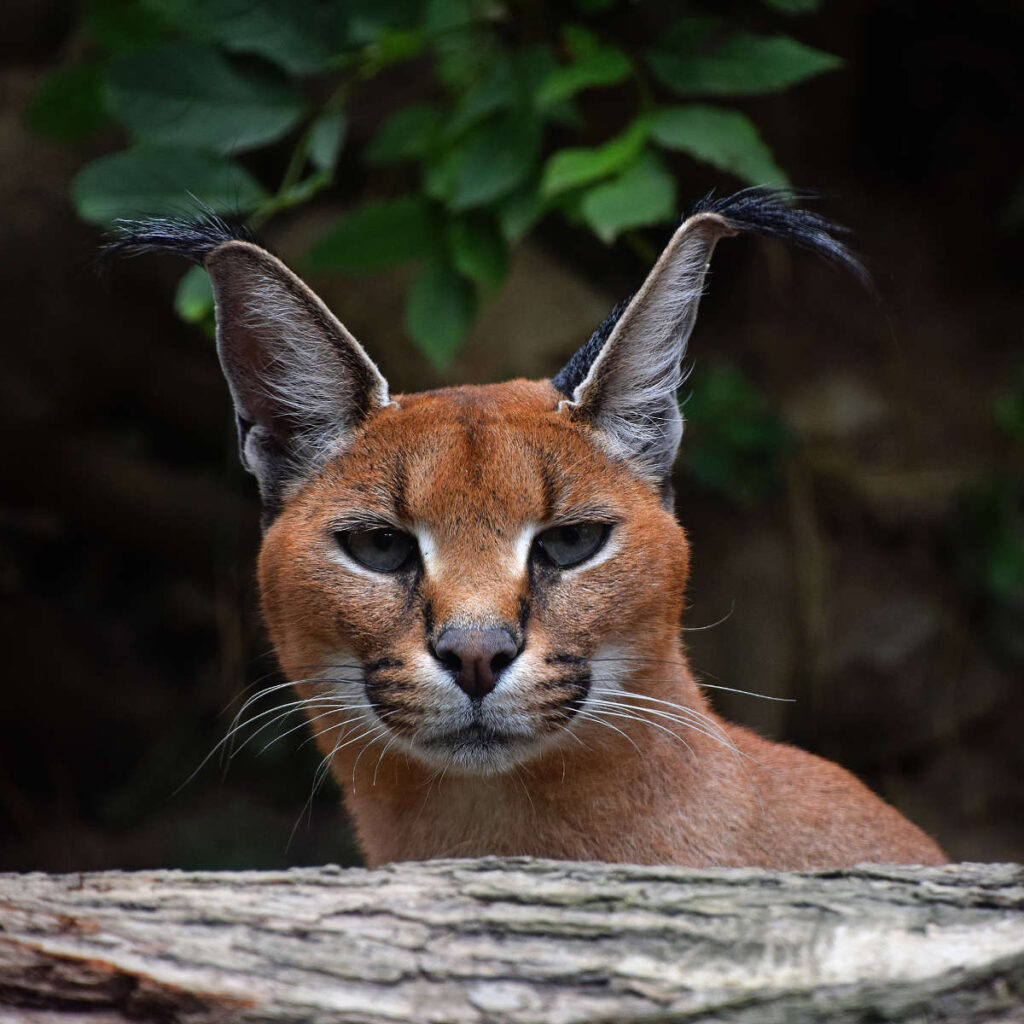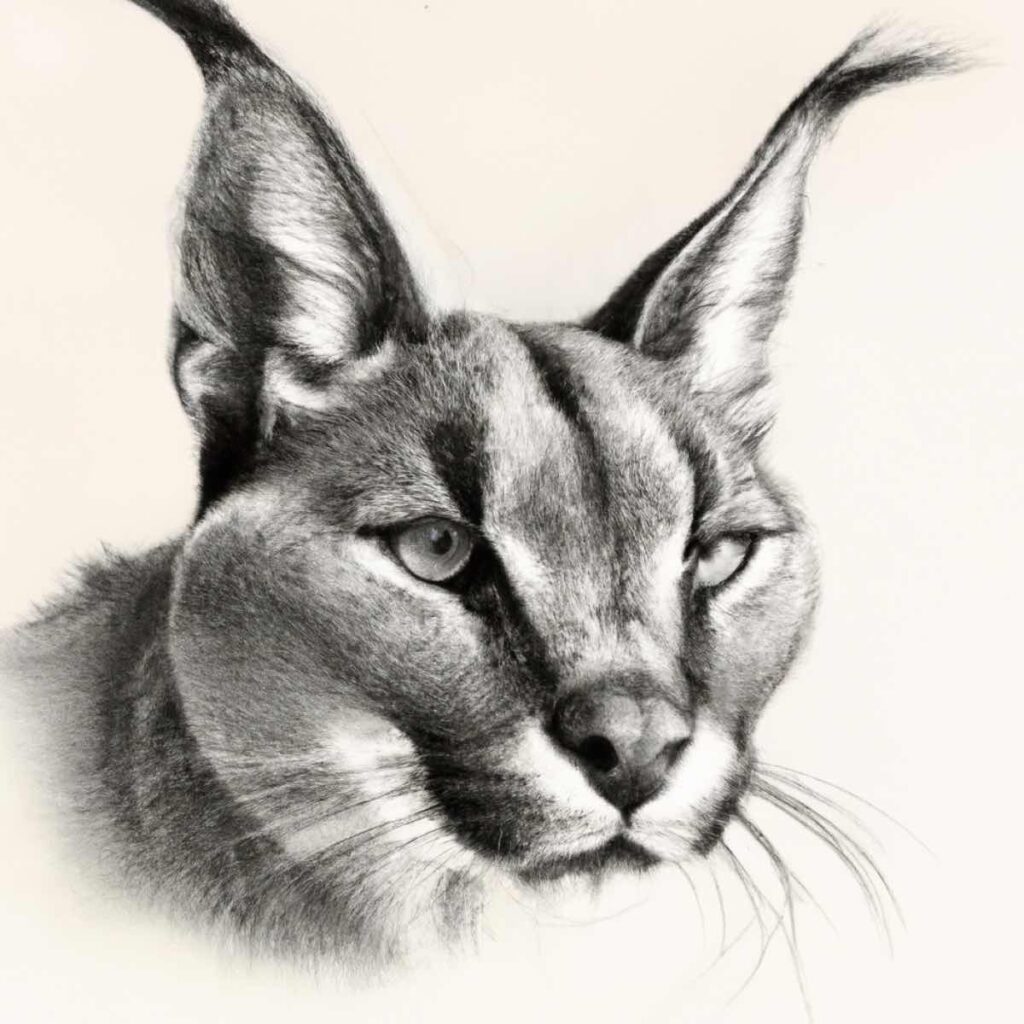Last Reviewed and Updated on February 13, 2023
Caracals, sometimes known as desert lynxes, is one of the most elusive felines found in Africa and the Middle East. With their iconic tufted ears and sharp, piercing eyes, these cats have been the subject of fascination since ancient times. Let’s explore some interesting facts about caracals and take a closer look at their behavior and lifestyle.

About Caracal
Caracals (Caracal caracal), also known as desert lynx, are medium-sized wild cats found in Africa, Central Asia, Pakistan, northwestern India, and the Middle East.
There are two recognized living subspecies of caracals;
- Southern caracal
- Northern caracal
- Asiatic caracal
Caracals are known for their distinctive appearance, which includes long, black tufts of fur on their ears and a reddish-tan or sandy coat. They are slender, small to medium-sized wild cats with long legs.
The diet of caracals primarily consists of small mammals such as hares, gazelles, and birds. They also feed on reptiles and insects. Caracals hunt for their food but can occasionally scavenge for it.
They can breed throughout the year, with females being in oestrous (fertile) once every two weeks unless they are pregnant. Gestation lasts between two to three months, and the female gives birth to one to six kittens. The kittens or juveniles stay with their mother for about nine months.
The conservation status of caracals is marked as the least concern in South Africa (and in general as a species), where it is widespread. In other areas, the populations are not threatened but are smaller and protected.
Facts About Caracals
Ready to learn some interesting facts about caracals? Let’s go!

1. They can jump higher than 10 ft / 3 m in the air (and catch their prey)
One of the most impressive abilities of a caracal is its jumping ability. This cat can leap higher than 10 ft / 3 m, and what’s even more impressive, it can catch its prey midair. They can even change the direction of their jump midair.
2. They are born with their ears curled up
Caracals are born with both their eyes and ears shut. Their claws are also not retractable at birth. They will open up their eyes by ten days; it will take longer (up to a month) for the ears to become erect and the claws to become retractable.
3. The tufts on their ears enhance their visual communication
Ear movement is used in communication, along with vocalization. The ear tufts may enhance visual communication.
They may also enhance their hearing.
4. Caracals can prey on animals over twice their weight
These animals are excellent hunters, they are fast, and they are agile. A caracal can take down prey that is two or even three times its size.
5. They eat their prey as soon as they kill it
These cats usually eat their prey as soon as they kill it. They don’t usually drag the prey to cover, although they can do it occasionally. If they tackle large prey, they will eat until they are full, leave and return to the prey at a later time if the location is undisturbed.
6. Caracal is the largest small cat in Africa
When it comes to small and medium-sized cats in Africa, the caracal is the largest of them all.
7. Females give birth in deserted burrows or tall vegetation
Why build a new house when you can borrow an old one? Female caracals give birth to their young in abandoned burrows made by aardvarks or porcupines. Tall vegetation is acceptable as well.
8. Their name means “black-ear”
Georges Buffon, a french scientist, proposed the name caracal for this feline species. The name caracal refers to its Turkis name ‘Karrah-kulak’ or ‘Kara-coulac,’ which means “black ear” or “cat with black ears.”

9. They are very adaptable and don’t live in specific habitats
Their main requirement is an abundance of prey. They can adapt to a wide range of environments, from savannas to grasslands (source; Focus on the Caracal “Lynx” (Caracal caracal) by D. Furstenburg).
10. Caracal is often confused with a lynx
Both species of animals have tufted ears and look similar in general. The one notable difference is the lynx are spotted and blotched while the caracal is not.
11. They are typically nocturnal animals
They are most active at night, but they can be active during the day too. These animals are very secretive and hard to observe, so their daytime activities can easily be missed.
12. Caracals were tamed for royalty in ancient India and Ancient Egypt
These cats were tamed for royalty and used for hunting game birds.
13. Caracal was religiously significant in Ancient Egypt
Caracal appears in Ancient Egypt paintings as well as bronze figurines. They are thought to have guarded the tombs of pharaohs.
14. Caraval is a hybrid between caracal and serval
Caracal hybrids are possible. Caraval or cara-serval is the cross between a male caracal and a female serval. A servical is a cross between a male serval and a female caracal (this hybrid was documented in the Los Angeles zoo).
It was also recorded that in the 1990s, a captive caracal spontaneously mated with a domestic cat in a Moscow zoo, resulting in hybrid offspring.
15. Caracals are solitary animals
They are solitary animals and do not form social groups, although they will tolerate other caracals in their territory.
